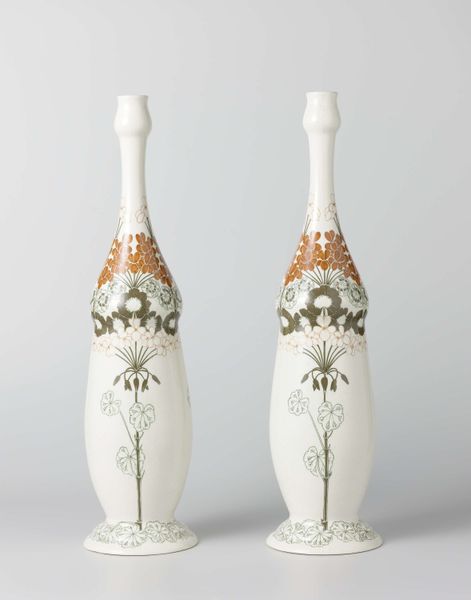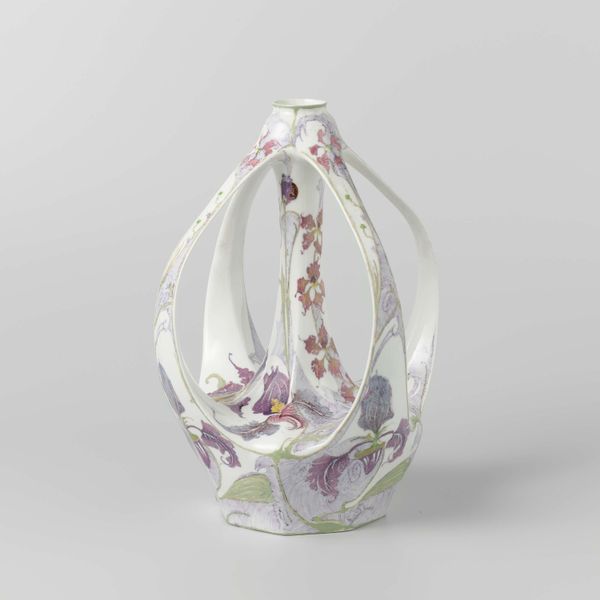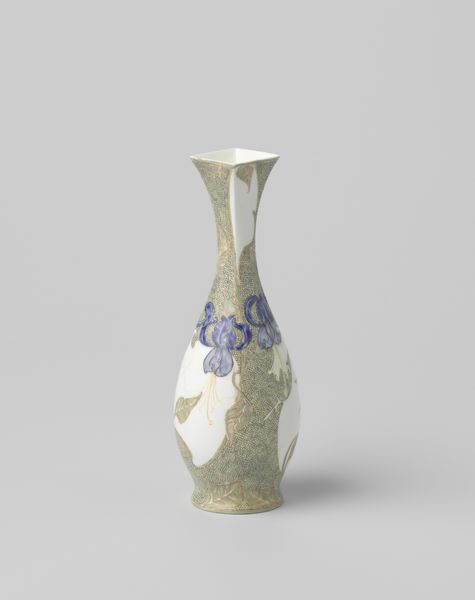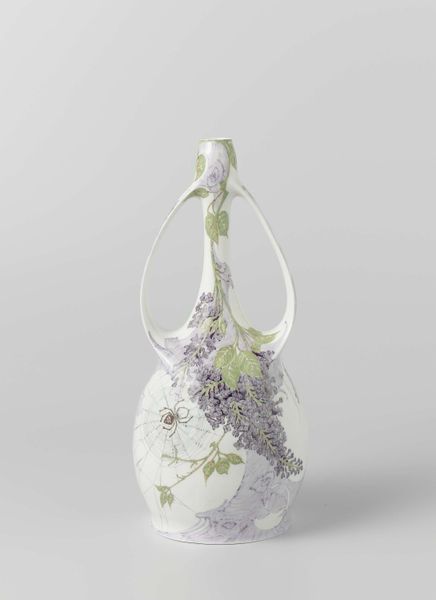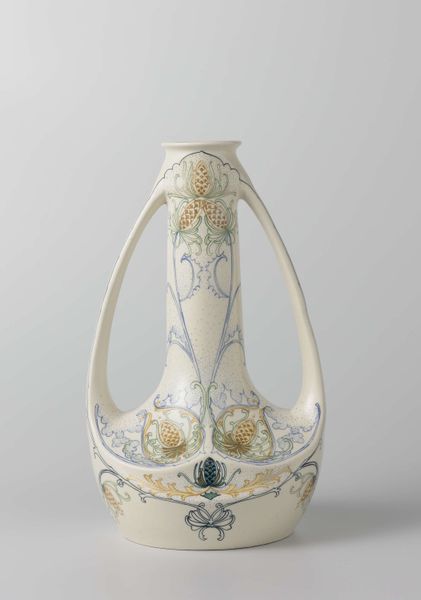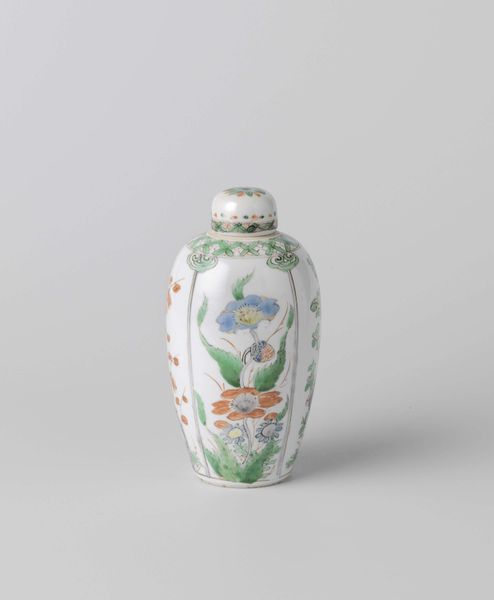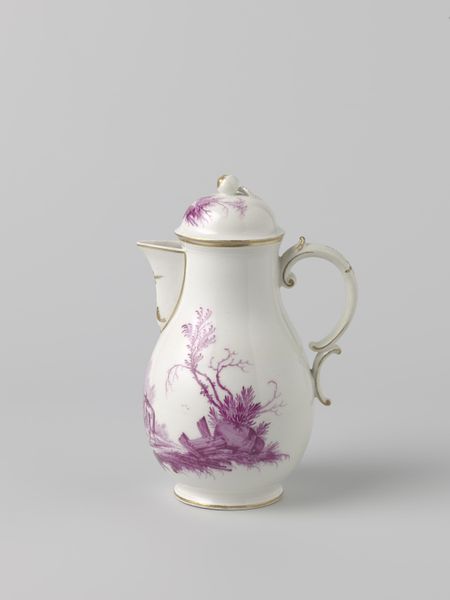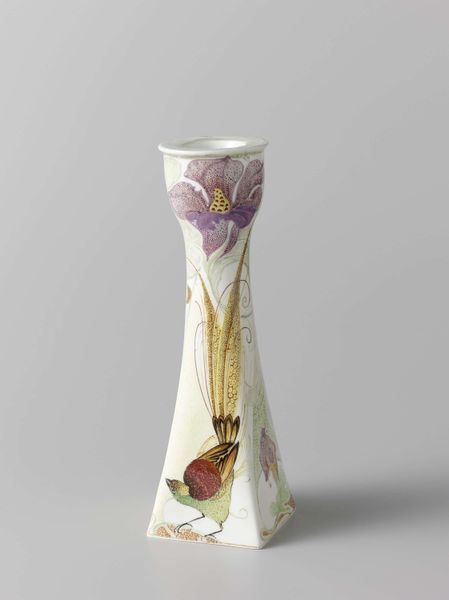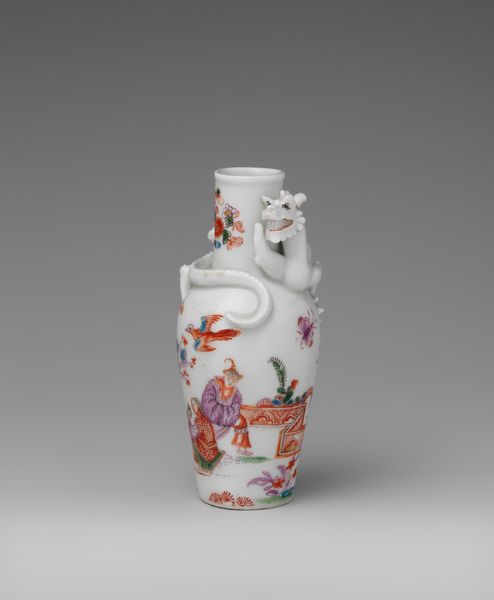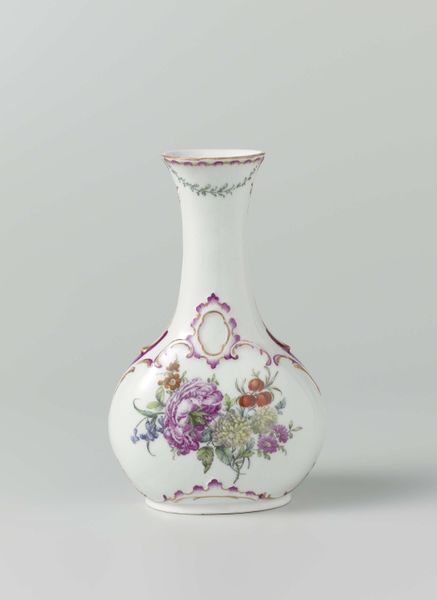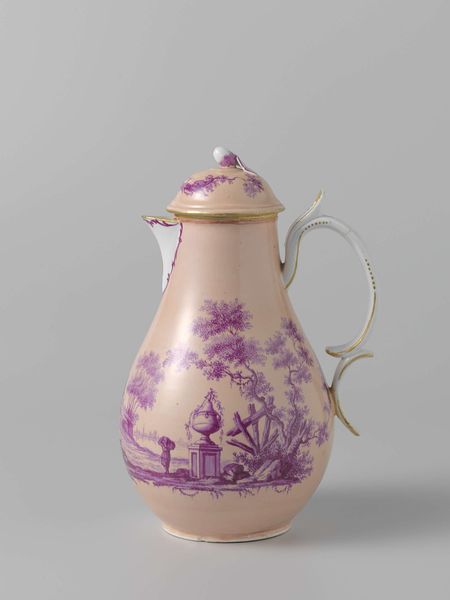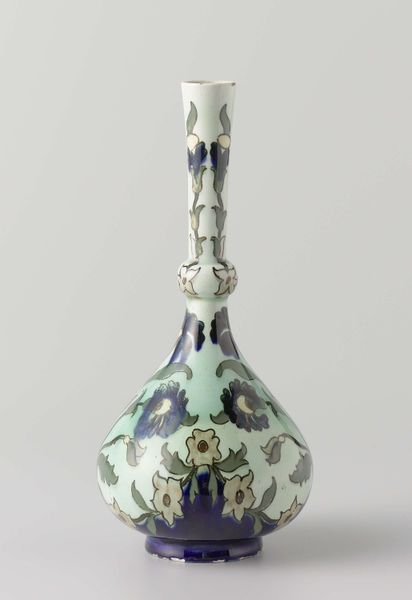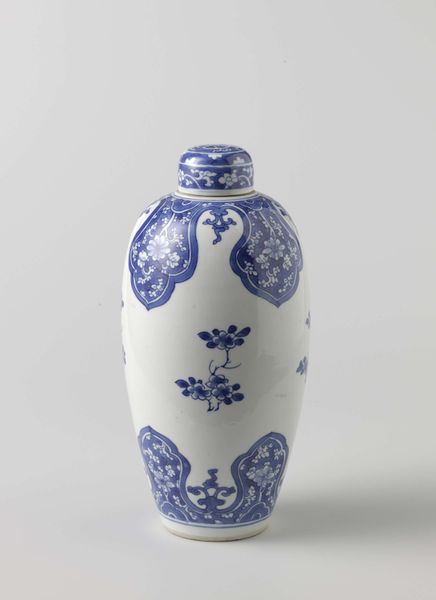
Vaas beschilderd met paarse seringen en op één wand een vogel 1914
0:00
0:00
ceramic
#
art-nouveau
#
ceramic
#
bird
#
flower
#
ceramic
#
decorative-art
Dimensions: height 26.1 cm, width 9.6 cm, diameter 10.7 cm
Copyright: Rijks Museum: Open Domain
Curator: Here we have a striking example of decorative art: a vase made by the N.V. Haagsche Plateelfabriek Rozenburg in 1914. Editor: The lilac and bird motifs give it an instant feeling of springtime, don't you think? There's something very delicate about the color palette and slender shape of the vase. Curator: Absolutely, and the form and imagery connect to the popularity of Art Nouveau at the time. It represents an effort to elevate craft into high art, which was certainly Rozenburg’s aim. The factory employed very skilled painters. This particular piece highlights their attention to detail and design sensibilities that catered to elite consumers. Editor: Look closely. One wonders about the amount of labor hours embedded in the painting! You can tell that making ceramics in this era wasn't merely about mass production; this required highly skilled work. The piece blends seamlessly design, craft, and a deliberate material focus. You can see their dedication to material transformation; from raw clay to glazed artwork. Curator: And don't overlook how it fits into a broader cultural moment. Consider the early 20th century, just before the outbreak of World War I. This vase, with its focus on beauty and nature, represents a desire for peace and tranquility in the face of growing global tensions. Also note that exhibiting such artistry contributes to cultural narratives shaped by those who can obtain this "beauty," defining value through a very restrictive social lens. Editor: Right! While pretty, its very existence relies on access, class, and privilege that is manufactured in tandem with the art itself. Also, think about the function of the vase. Is it simply decorative, or would it actually hold flowers? It is interesting how the representation blends into actual use, reflecting different labor systems and means of engaging with the work. Curator: A critical consideration. Ultimately, viewing art like this gives insight into the artistic aspirations, the societal undercurrents, and how institutions shape creative expression. Editor: Agreed! By interrogating not just what it depicts but how it's made and whom it serves, the ceramic unveils the material reality.
Comments
No comments
Be the first to comment and join the conversation on the ultimate creative platform.
